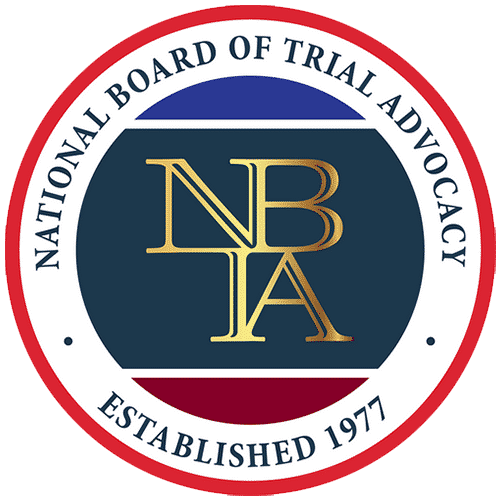The United States Department of Justice (DOJ) defines stalking as “engaging in a course of conduct directed at a specific person that would cause a reasonable person to fear for his or her safety or the safety of others or suffer substantial emotional distress.” Ohio has state stalking laws that can involve steep penalties for alleged offenders.
Menacing by stalking offenses in Ohio can often be the result of repeated unwanted contact, but some people may be charged with this offense as the result of simple coincidence rather than deliberate criminal intent. It becomes important for anybody accused of a stalking crime to quickly seek legal counsel for help fighting the criminal charges.
Columbus, OH Menacing / Stalking Lawyer
Were you arrested for an alleged menacing by stalking offense in the Columbus area? You will want to be sure that you have Sabol | Mallory on your side.
Our firm knows how to defend people against these types of charges and may be able to get your own criminal charges significantly reduced or completely dismissed. Call (614) 300-5088 or contact us online today to set up a free consultation that will allow us to examine your case and begin developing a winning defense.
Menacing / Stalking Charges in Ohio
Ohio Revised Code § 2903.211(A)(1) plainly states that no person by engaging in a pattern of conduct (defined as “two or more actions or incidents closely related in time, whether or not there has been a prior conviction based on any of those actions or incidents, or two or more actions or incidents closely related in time, whether or not there has been a prior conviction based on any of those actions or incidents, directed at one or more persons employed by or belonging to the same corporation, association, or other organization. Actions or incidents that prevent, obstruct, or delay the performance by a public official, firefighter, rescuer, emergency medical services person, or emergency facility person of any authorized act within the public official's, firefighter's, rescuer's, emergency medical services person's, or emergency facility person's official capacity, or the posting of messages, use of intentionally written or verbal graphic gestures, or receipt of information or data through the use of any form of written communication or an electronic method of remotely transferring information, including, but not limited to, a computer, computer network, computer program, computer system, or telecommunications device”) can knowingly cause another person to believe that the alleged offender will cause physical harm to the other person or a family or household member (defined as any of the following who is residing or has resided with the person against whom the act prohibited in Ohio Revised Code § 2903.211(A)(1) is committed: A spouse, a person living as a spouse, or a former spouse of the person; a parent, a foster parent, or a child of the person, or another person related by consanguinity or affinity to the person; or a parent or a child of a spouse, person living as a spouse, or former spouse of the person, or another person related by consanguinity or affinity to a spouse, person living as a spouse, or former spouse of the person, and also the natural parent of any child of whom the person against whom the act prohibited in Ohio Revised Code § 2903.211(A)(1) is committed is the other natural parent or is the putative other natural parent) of the other person or cause mental distress (defined as “any mental illness or condition that involves some temporary substantial incapacity or any mental illness or condition that would normally require psychiatric treatment, psychological treatment, or other mental health services, whether or not any person requested or received psychiatric treatment, psychological treatment, or other mental health services) to the other person or a family or household member of the other person. The statute further states that in addition to any other basis for the other person's belief that the alleged offender will cause physical harm to the other person or the other person's family or household member or mental distress to the other person or the other person's family or household member, the other person's belief or mental distress can be based on words or conduct of the alleged offender that are directed at or identify a corporation, association, or other organization that employs the other person or to which the other person belongs.
Under Ohio Revised Code § 2903.211(A)(2), no person, through the use of any form of written communication or any electronic method of remotely transferring information, including, but not limited to, any computer, computer network, computer program, r-computer system, or telecommunication device can post a message or use any intentionally written or verbal graphic gesture with purpose to do either of the following:
- Violate Ohio Revised Code § 2903.211(A)(1); or
- Urge or incite another to commit a violation of Ohio Revised Code § 2903.211(A)(1).
Ohio Revised Code § 2903.211(A)(3) provides that no person, with a sexual motivation (defined under Ohio Revised Code § 2971.01 as “a purpose to gratify the sexual needs or desires of the offender”), can violate division Ohio Revised Code § 2903.211(A)(1) or Ohio Revised Code § 2903.211(A)(2). Menacing by stalking is generally a first-degree misdemeanor, but the offense can become a fourth-degree felony if:
- The alleged offender has been previously convicted of or pleaded guilty to a menacing by stalking violation or an aggravated trespass violation.
- In committing the offense under Ohio Revised Code § 2903.211(A)(1), Ohio Revised Code § 2903.211(A)(2), or Ohio Revised Code § 2903.211(A)(3), the alleged offender made a threat of physical harm to or against the victim, or as a result of an offense committed under Ohio Revised Code § 2903.211(A)(2) or Ohio Revised Code § 2903.211(A)(3), a third person induced by the alleged offender's posted message made a threat of physical harm to or against the victim.
- In committing the offense under Ohio Revised Code § 2903.211(A)(1), Ohio Revised Code § 2903.211(A)(2), or Ohio Revised Code § 2903.211(A)(3), the alleged offender trespassed on the land or premises where the victim lives, is employed, or attends school, or as a result of an offense committed under Ohio Revised Code § 2903.211(A)(2) or Ohio Revised Code § 2903.211(A)(3), a third person induced by the alleged offender's posted message trespassed on the land or premises where the victim lives, is employed, or attends school.
- The victim of the alleged offense is a minor.
- The alleged offender has a history of violence toward the victim or any other person or a history of other violent acts toward the victim or any other person.
- While committing the offense under Ohio Revised Code § 2903.211(A)(1) or a violation of Ohio Revised Code § 2903.211(A)(3) based on conduct in violation of Ohio Revised Code § 2903.211(A)(1), the alleged offender had a deadly weapon on or about the alleged offender's person or under the alleged offender's control.
- At the time of the commission of the offense, the alleged offender was the subject of a protection order issued under Ohio Revised Code § 2903.213 or 2903.214, regardless of whether the person to be protected under the order is the victim of the offense or another person.
- In committing the offense under Ohio Revised Code § 2903.211(A)(1), Ohio Revised Code § 2903.211(A)(2), or Ohio Revised Code § 2903.211(A)(3), the alleged offender caused serious physical harm to the premises at which the victim resides, to the real property on which that premises is located, or to any personal property located on that premises, or, as a result of an offense committed under Ohio Revised Code § 2903.211(A)(2) or an offense committed under Ohio Revised Code § 2903.211(A)(3) based on a violation of Ohio Revised Code § 2903.211(A)(2), a third person induced by the offender's posted message caused serious physical harm to that premises, that real property, or any personal property on that premises.
- Prior to committing the offense, the alleged offender had been determined to represent a substantial risk of physical harm to others as manifested by evidence of then-recent homicidal or other violent behavior, evidence of then-recent threats that placed another in reasonable fear of violent behavior and serious physical harm, or other evidence of then-present dangerousness.
Ohio Revised Code § 2903.211(A)(3) establishes that if the victim of an alleged offense is an officer or employee of a public children services agency or a private child placing agency and the alleged offense relates to the officer's or employee's performance or anticipated performance of official responsibilities or duties, menacing by stalking is either a fifth-degree felony or, if the alleged offender has been previously convicted of or pleaded guilty to an offense of violence, the victim of that prior offense was an officer or employee of a public children services agency or private child placing agency, and that prior offense related to the officer's or employee's performance or anticipated performance of official responsibilities or duties, a fourth-degree felony.
Ohio Revised Code § 2903.22 is also the state law relating to menacing, and it states that no person can knowingly cause another to believe that the alleged offender will cause physical harm to the person or property of the other person, the other person's unborn, or a member of the other person's immediate family. This crime is a fourth-degree misdemeanor, but it can become a first-degree misdemeanor if the alleged victim of the offense is an officer or employee of a public children services agency or a private child placing agency and the offense relates to the officer's or employee's performance or anticipated performance of official responsibilities or duties. If the alleged offender previously has been convicted of or pleaded guilty to an offense of violence, the alleged victim of that prior offense was an officer or employee of a public children services agency or private child placing agency, and that prior offense related to the officer's or employee's performance or anticipated performance of official responsibilities or duties, the crime is a fourth-degree felony.
Under Ohio Revised Code § 2903.21, aggravated menacing involves a person knowingly causing another to believe that the alleged offender will cause serious physical harm to the person or property of the other person, the other person's unborn, or a member of the other person's immediate family. Aggravated menacing is a first-degree misdemeanor, but it can be a fifth-degree felony if the alleged victim of the offense is an officer or employee of a public children services agency or a private child placing agency and the offense relates to the officer's or employee's performance or anticipated performance of official responsibilities or duties. If the alleged offender has been previously convicted of or pleaded guilty to an offense of violence, the alleged victim of that prior offense was an officer or employee of a public children services agency or private child placing agency, and that prior offense related to the officer's or employee's performance or anticipated performance of official responsibilities or duties, the crime becomes a fourth-degree felony.
Menacing / Stalking Penalties in Columbus
Menacing by stalking convictions can carry major consequences that will depend on how a criminal charge has been classified. Criminal charges in Ohio are generally punished as follows:
- Fourth-Degree Misdemeanor — Up to 30 days in jail and/or a fine of up to $250
- First-Degree Misdemeanor — Up to 180 days in jail and/or a fine of up to $1,000
- Fifth-Degree Felony — Up to one year in prison and/or a fine of up to $2,500
- Fourth-Degree Felony — Up to 18 months in prison and/or a fine of up to $5,000
In addition to possible imprisonment and fines, convictions can carry many other long-term consequences for alleged offenders. People may suffer loss of professional licenses or even jobs if convicted.
Ohio Menacing / Stalking Resources
Are You Being Stalked? - Ohio Domestic Violence Network (ODVN) — View a PDF from the ODVN that explains stalking and why it is a crime. Learn more about protection orders through civil courts and criminal courts. You can also find advice about planning for your safety and learn more about technological uses relating to stalking.
For Stalking | The Center for Family Safety and Healing — Visit this website to learn about signs of stalking and steps you should take if you suspect stalking. You can also find a link to a handout that addresses stalking behaviors, effects of stalking behaviors, and safety tips. There is also other related information.
Sabol | Mallory | Columbus, OH Menacing / Stalking Attorney
If you were recently arrested for an alleged menacing by stalking offense in Columbus, you are going to need experienced legal representation in court. Make sure that you contact Sabol | Mallory for the strongest possible defense you can get against these kinds of charges.
Our firm can conduct a complete investigation to help get you the best possible defense options. We will review your case when you call (614) 300-5088 or contact us online to arrange a free consultation.











